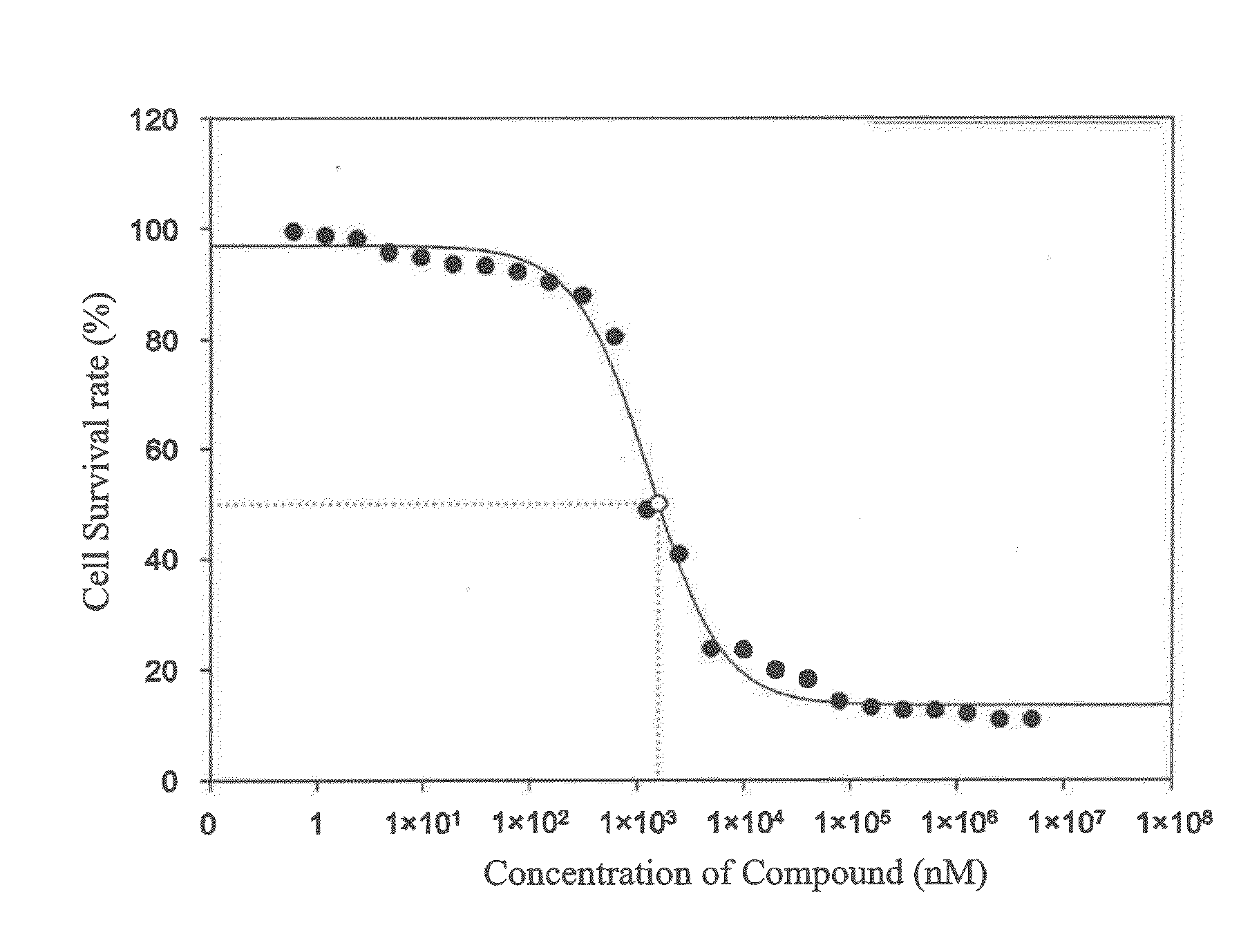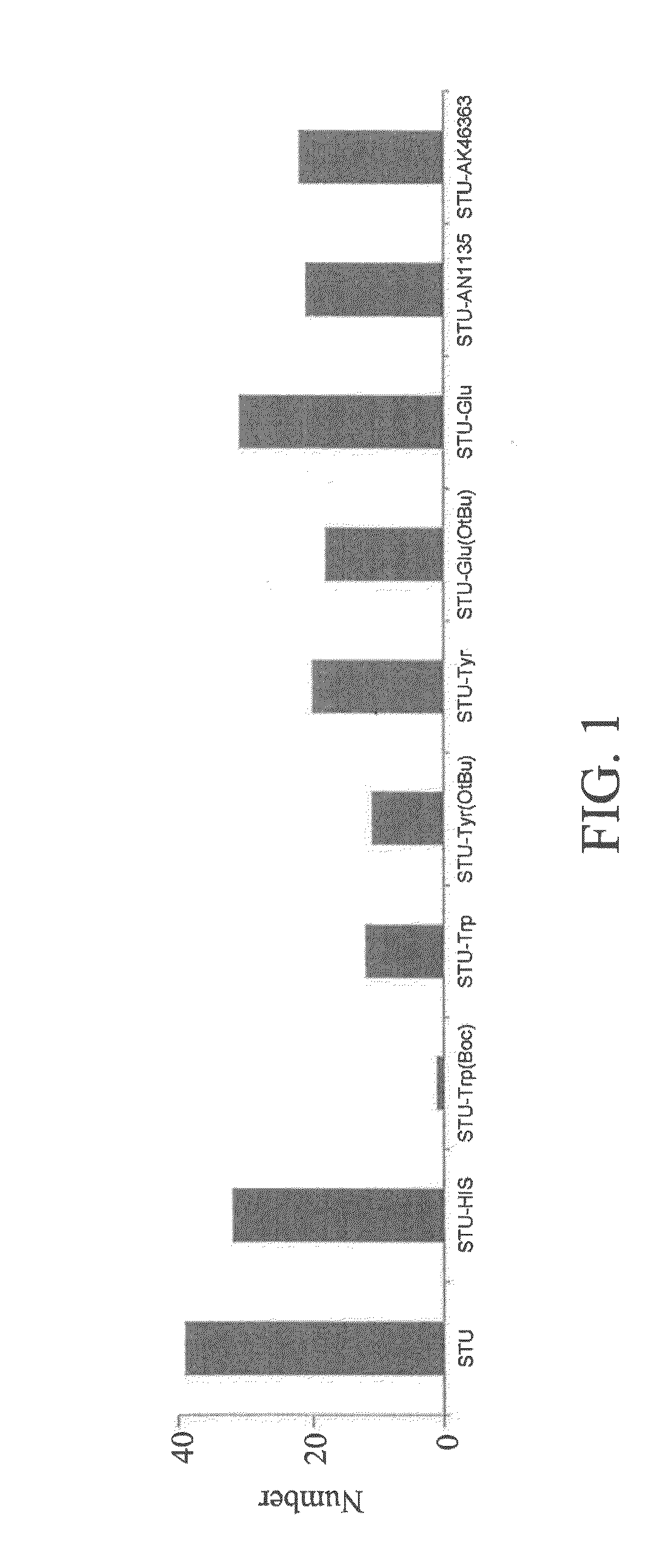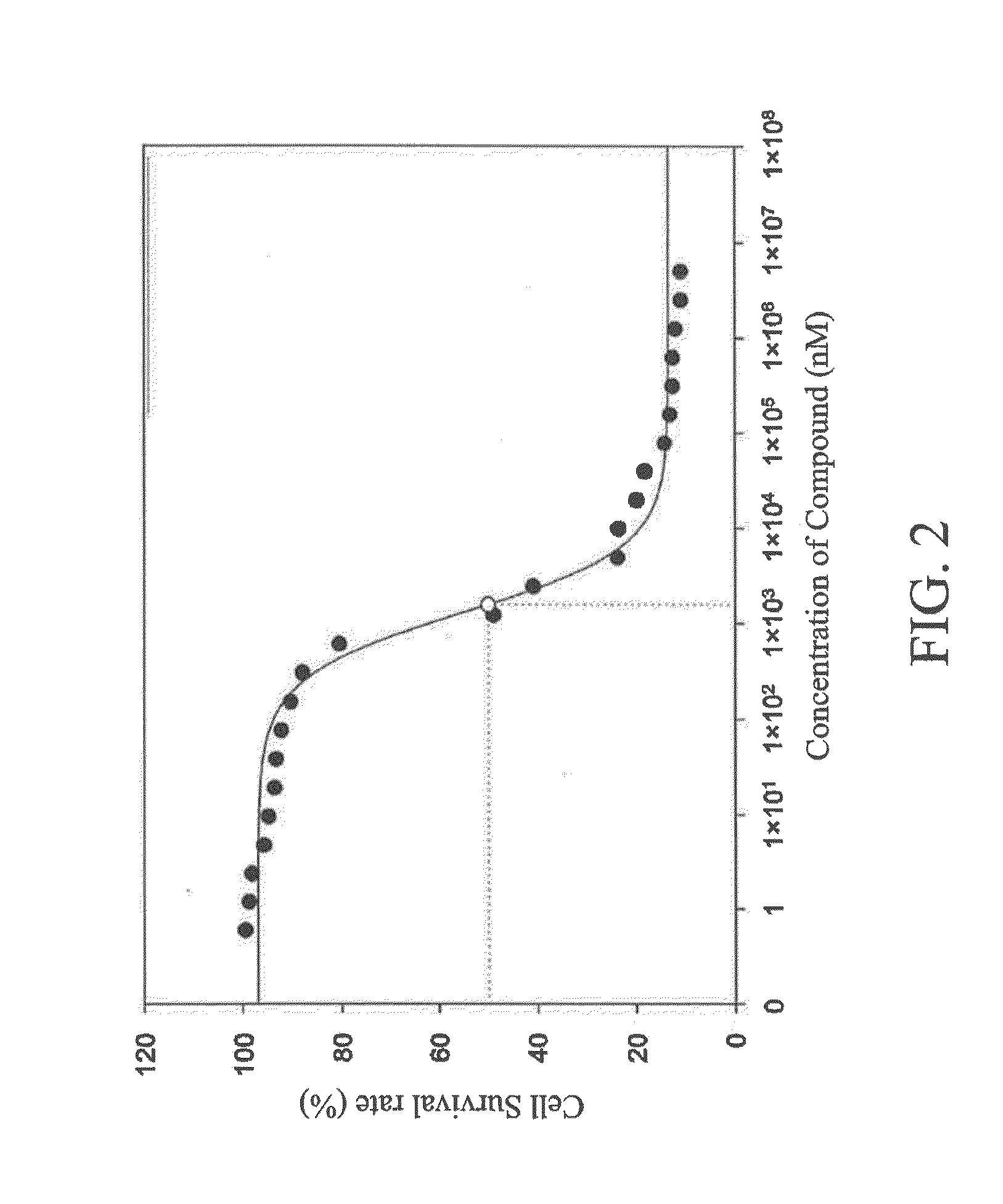Selective inhibitors for protein kinases and pharmaceutical composition and use thereof
a protein kinase and selective inhibitor technology, applied in the field of protein kinase inhibitors, can solve the problems of many side effects, cardiotoxicity, anemia, and thrombocytopenia, and achieve the effects of reducing the number of side effects, and improving the safety of us
- Summary
- Abstract
- Description
- Claims
- Application Information
AI Technical Summary
Benefits of technology
Problems solved by technology
Method used
Image
Examples
example 1
Design and Synthesis of a Type-S Protein Kinase Inhibitor
[0048]First, STU was used as a core framework, and the length of a functional group (i.e., R group) attached to the STU was limited to from 5 to 12 Å, based on the physicochemical properties of various protein kinase substrates. Nine type-S protein kinase inhibitors, including compounds 1 to 9 of the present invention, were designed. Each of the type-S protein kinase inhibitors can bind to an ATP-binding site and a substrate-recognition site of a protein kinase simultaneously, so as to achieve the effect of selectively inhibiting the protein kinase.
I. Synthesis of Compound 1:
[0049]1. Synthesis of STU-[Fmoc-His(Trt)-OH] Compound:
[0050]In an ice bath, 50 milligrams (mg) (0.11 millimoles (mmol)) of STU and 99.6 mg (0.16 mmol) of histidine (hereinafter abbreviated as Fmoc-His(Trt)-OH) were dissolved in 2 milliliters (ml) of a dimethylformamide (hereinafter abbreviated as DMF) solution, 78 microliters (μl) of N,N-diisopropylethylam...
example 2
Type-S Protein Kinase Inhibitors Had Selective Inhibitory Effects on Various Protein Kinases
[0089]The 9 type-S protein kinase inhibitors (including compounds 1 to 9) synthesized were tested for their inhibitory effects on various protein kinases in the present invention.
[0090]First, according to the docking results of the present invention, it showed that the type-S protein kinase inhibitor can bind to the ATP-binding site and substrate-recognition site of the protein kinase simultaneously. In the results, compound 7 of the present invention can form hydrogen bonds and electrostatic forces with the positively-charged sites of the protein kinase INSR (hereinafter abbreviated as INSR) at residues K1085 and R1089. Compound 1 of the present invention can bind to the arginine residue of the substrate binding site of protein kinase AKT1 (hereinafter abbreviated as AKT1), and interact with residues E234, F236, E278 and D439 in AKT1. Compounds 2 and 8 of the present invention can interact w...
example 3
Type-S Protein Kinase Inhibitors can Reduce Survival Rates of Gastric Cancer Cells
[0092]Previous studies discovered that protein kinase FGFR2 (hereinafter abbreviated as FGFR2) over-expressed in gastric cancer cells, whereas compound 4 of the present invention had an inhibitory effect on FGFR2. Hence, compound 4 of the present invention in the test had an inhibitory effect on gastric cancer cells. Gastric cancer cell line MKN-45 was incubated on a 96-well plate (about 1×104 cells / well). After the cells adhered, the 96-well plate was replaced with serum-free culture media, and different concentrations (from 40 to 0.039 μM) of drugs were added. After incubating at 37° C. for 24 hours, PBS was used for washing three times, and MTT culture media was added to react with cells. Violet crystals appeared after two hours. Then, DMSO (50 μl) was added to terminate the reaction. A light-absorbing micro-volume spectrophotometer (ELISA reader) was used, and an absorption value of 570 nm was obta...
PUM
 Login to View More
Login to View More Abstract
Description
Claims
Application Information
 Login to View More
Login to View More - R&D
- Intellectual Property
- Life Sciences
- Materials
- Tech Scout
- Unparalleled Data Quality
- Higher Quality Content
- 60% Fewer Hallucinations
Browse by: Latest US Patents, China's latest patents, Technical Efficacy Thesaurus, Application Domain, Technology Topic, Popular Technical Reports.
© 2025 PatSnap. All rights reserved.Legal|Privacy policy|Modern Slavery Act Transparency Statement|Sitemap|About US| Contact US: help@patsnap.com



